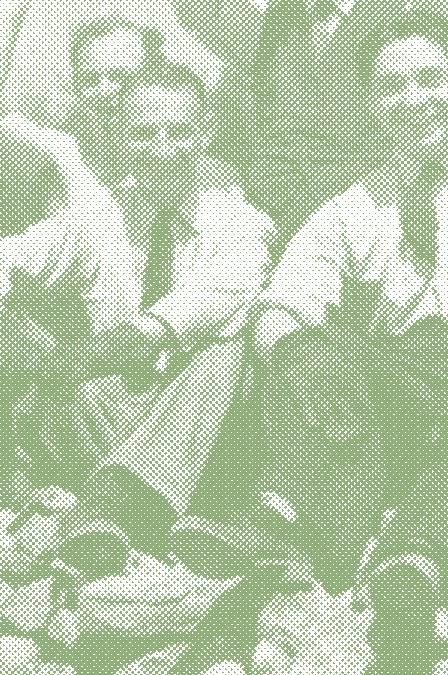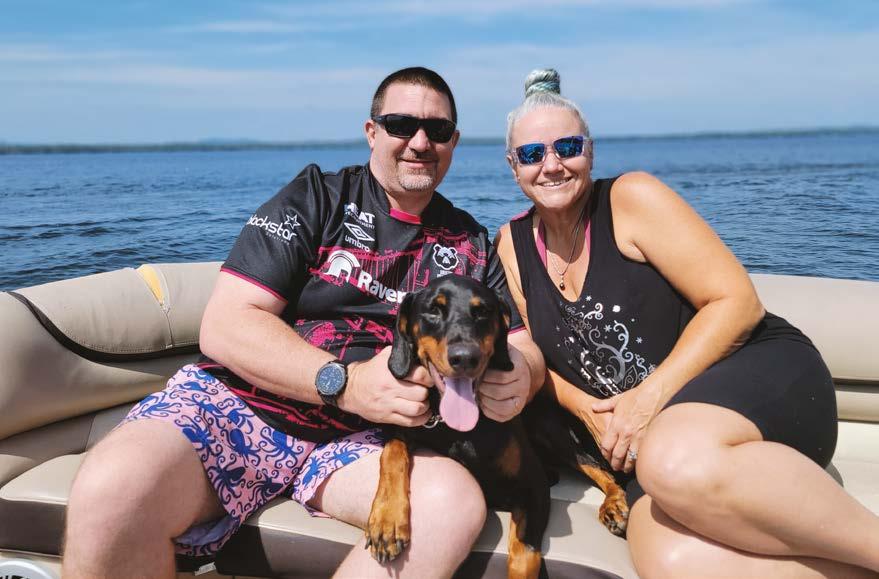
3 minute read
Lest we forget LEST WE FORGET
Notes on the Origins of the Old Bristolians’ War Memorial Playing Field
from left to right: J. B. Ackland, J. C. Hligson (with D. W. Williams behind), M. J. Williams, P. F. Stirratt, F. S. Hazard, Mr Leslie Morris, K. J. Stidard, Robin Gough, A. E. Read (waving), J. T. Carpenter, R. D. Pugsley.
Before the end of WW2, the Old Bristolians Society, the Headmaster, and the Governors began serious discussions about a suitable memorial for the many Old Bristolians who had lost their lives in the War. John Garrett was asked to suggest what form it should take and he proposed a performing arts centre at the School. Mr Eustace Button, OB and wellknown Bristol architect was asked to examine the idea and advise on cost. This initial proposal was found to be too expensive so after further discussion it was finally agreed that new gates would be installed at the School, the fence around Tyndall's Park would be renewed and a Book of Remembrance placed in the library. It was further agreed that the Society and the three athletic clubs would purchase a piece of land to become both a playing field for the clubs and a home for the Old Bristolians Society.
The three sports clubs would form a Management Committee to manage the newly named “Old Bristolians War Memorial Playing Field”. In return they would pay for all running costs on the ground including the employment of a groundsman. The Appeal would provide the funding for setting up the entire Memorial.
The land itself at Failand was first spotted by Geoffrey Coleman MC in 1949, a former OB Rugby captain, OB cricketer with an impressive war record. After the field had been purchased a great deal of work remained to be done to turn it into a sports ground. Initially it was ploughed several times and tons of stone removed by parties of OBs every weekend for over a year. Finally, the War Memorial Playing Field was officially opened in June 1952 with winter games being played there from the previous Autumn.
The post-war shortages in Britain presented all kinds of problems including the provision of a pavilion and changing rooms. The only possible solution was a temporary prefabricated wooden structure which just about lasted 25 years. It was replaced by a brick-built structure in a deal with Ashton Court Country Club for a part of our ground which fortunately we rarely used. We raised a further £20,000 to kit-out the building which was opened by Michael Booker on 7th January 1977.
Throughout these 70 years, the Sports Club and Society have worked closely together. The Society as landlord have always had two members on the Sports Club Management Committee. Their role was as curator to ensure that nothing breached this understanding. The ground itself and the many players who enjoyed their games there became a living tribute to those men listed on the memorial plaque on the front of the Clubhouse. Each name lists both years at school, branch of the services and a brief description of their sad fate.
The Society have come to the aid of the Sports Club on several occasions over the years as well as being totally involved in the Appeal for an artificial turf pitch (ATP) in the late '90s when league hockey could no longer be played on grass. Such was the success of this Appeal that £156,000 was raised in one year as our 50% portion of the pitch which we were to share with the School on their ground alongside us in Youngwood Lane.
From the early years of Failand, the School was always there to help by frequently hiring additional pitches on our ground at Failand when they needed further pitches mid-week. The eventual move of the School's ground to Failand has continually strengthened these ties, never more so than with the ATP we have shared with them for over 20 years.
When originally in 1952 the three OB clubs played their games on the same ground for the very first time at Failand, they each came to an agreement with the Society to act as equal partners yet retain their individual autonomy as a cricket, rugby, and hockey club. The idea of an amalgamated sports club has never really been pursued, all three clubs are totally open as far as membership is concerned, undoubtedly Failand would never have existed if membership had precluded those players not educated at BGS.


I finish with some words on this matter from Leslie Morris, the former housemaster and Society President, who was totally dedicated to Failand in his retirement. Leslie Morris had lost his foster son in the Battle of Normandy and his name is on the Memorial at Failand. When asked about welcoming members to the clubs who had not been to the School he replied,
Hence, with junior and senior members, we welcome close to a thousand members to our War Memorial Playing Field throughout the year. What finer memorial could there ever
BACK ROW:
D. G. Lincoln, R. J. Nichol, A. G.Sims, J. A. Esbester, T. L. Beagley, R. N. Edbrooke

FRONT ROW:
S. C. Yeo, A. W. C. Simons, A. V. K. Chaffey (Captain), A. W. Keen, V. H. Warren










